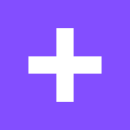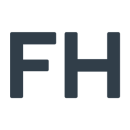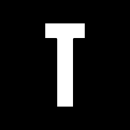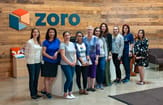In today’s world of tech, visual appeal is just as important as back-end efficiency. Who wants to use a product that’s ugly to look at or clunky to use? That’s where the trained eyes and professional skills of designers and UX strategists come in. They shape a company’s raw technical output into a shining finished product that’s as beautiful as it is intuitive. We spoke to authorities on appeal and usability at four Chicago tech companies to learn more about what got them interested in their field, and which project they’ve taken pride in lately.

Echo Global Logistics services the transportation industry with its proprietary tech that lets companies efficiently outsource their shipping responsibilities. Director of User Experience and Digital Design Tony Boun said recently, he met with users to field feedback on a service his team has been working on and was pleased with the results.
How and why did you get into the field of UX and design?
I was first introduced to the UX field while working for a startup as a web designer. However, I found myself jumping into the responsibilities of a front-end developer, UX researcher, marketing analyst, SEO analyst, data analyst and graphic designer. My interest in quality product and design validation was strong. I really enjoy the process of understanding the design lifecycle, starting with an idea, executing that vision, assessing the outcome and communicating that outcome to those who would benefit from it.
I really enjoy the process of understanding the design lifecycle.”
Tell us about the most successful UX design project you’ve been a part of, and what made it successful?
We recently visited a few carriers to discuss Echo’s self-service carrier portal, EchoDrive. There was a sense of gratification to hear and witness the fulfillment of their needs within the application. Our discovery, research and design process created alignment between users’ expectations of the technology and the value it brought to their workflow.

Solstice creates custom tech solutions of all types for Fortune 500 companies. User Experience Design Consultant Maxwell Young said he recently worked to transform a client’s data-first product into a people-first output.
How and why did you get into the field of UX and design?
As a kid, I grew up loving computers and all they enable us to do, so from a young age I knew I wanted to learn as much as I could about them and work with them. I was lucky to have the opportunity to attend a highly ranked school in computer science, but thanks to the relationships I made there, I grew to realize that I was really interested in the people, practices and environments that computing empowers. Ever since then, I’ve been engrossed in the field of user experience and the design of it.
I was really interested in the people, practices, and environments that computing empowers.”
Tell us about the most successful UX design project you’ve been a part of, and what made it successful?
I recently worked with some data scientists that developed some exciting new algorithms for agricultural purposes. Given their professions and passions, I was not surprised when their answer to the question, “What does your product do, and who is it for?” was given in datasets and graphs. They wanted a product to be developed from their body of work and I was there to help it look good. But as my query of, “What is the human need we are fulfilling?” continued through the next few days, they began to understand that their work’s success depended not on the translation from algorithm to app, but being compassionate to users’ needs. They were then eager to throw themselves into human-centric research and design, which resulted in a product that was utilized by a wider audience than they planned, and received more gratefully than they imagined.

Pharmaceutical brands leverage closerlook’s platform to enhance their communications with customers and industry pros through tools like data collection, marketing and interactive web design. Art Director Saki Rizwana said she recently helped work on a complicated project in which collaboration with team members of difference experience levels was the key to success.
How and why did you get into the field of UX and design?
I fell into design in college, as it allowed me to be creative and make use of the traditional art techniques I'd been cultivating in high school. Since then, I've realized that design as a discipline aligns with my desire to use critical thinking and problem solving in my work. Every design project is an opportunity to solve a unique problem and I love rising to meet that challenge.
I’ve realized that design as a discipline aligns with my desire to use critical thinking and problem solving in my work.”
Tell us about the most successful UX design project you’ve been a part of, and what made it successful?
I was recently part of a team that launched a disease-state awareness site. The project was challenging as it was my first experience with a launch that needed to follow pharmaceutical medical, regulatory and legal guidelines. In building the story for the patient and healthcare professional pages, the team and I faced a lot of challenges in visualizing a complicated process and making it easy to digest. What made this project really successful, in my opinion, was that we had a great mix of seasoned vets who were willing to share their knowledge with more green folks like myself who were eager to learn, and that collaboration produced something none of us could have thought to create in a silo.

TopstepTrader lets users hone their skills in a simulated training ground before graduating to the real trading floor, where they’re given actual capital to manage. Graphic Designer Hollie Swidarski said combining creativity with business in her field allows her to play to her natural strengths and professional inclinations.
How and why did you get into the field of UX and design?
I was an unabashed art kid growing up. Name the class, I was there. My favorite was Figure Studio, where we got to draw models using charcoal and make an absolute mess of things. I loved the freedom of creating something from nothing, but I also had a very disciplined, analytical side to my personality.
In college, I studied graphic design because it meshed the worlds of art and business — which was perfect, because it opened the door to a career that engages both the creative and strategic parts of my mind.
In both business and art, simpler is usually better.”
Tell us about the most successful UX design project you’ve been a part of, and what made it successful?
I recently helped design a new signup process for our TopstepFX currency traders. We were noticing a significant dropoff in conversions once leads hit the paywall, and we were tasked with finding ways to improve the user experience. What I loved about this project was the autonomy it awarded me. The problem was well-defined but the solution wasn’t, and I was asked to dig beyond my design chops to make things work.
In addition to creating the new user interface, I spent hours researching the psychology of customers as they moved through the checkout process. We discovered that they were more likely to purchase when the steps were broken-down into more digestible pieces. It gave users a feeling of confidence and accomplishment. In both business and art, simpler is usually better.











